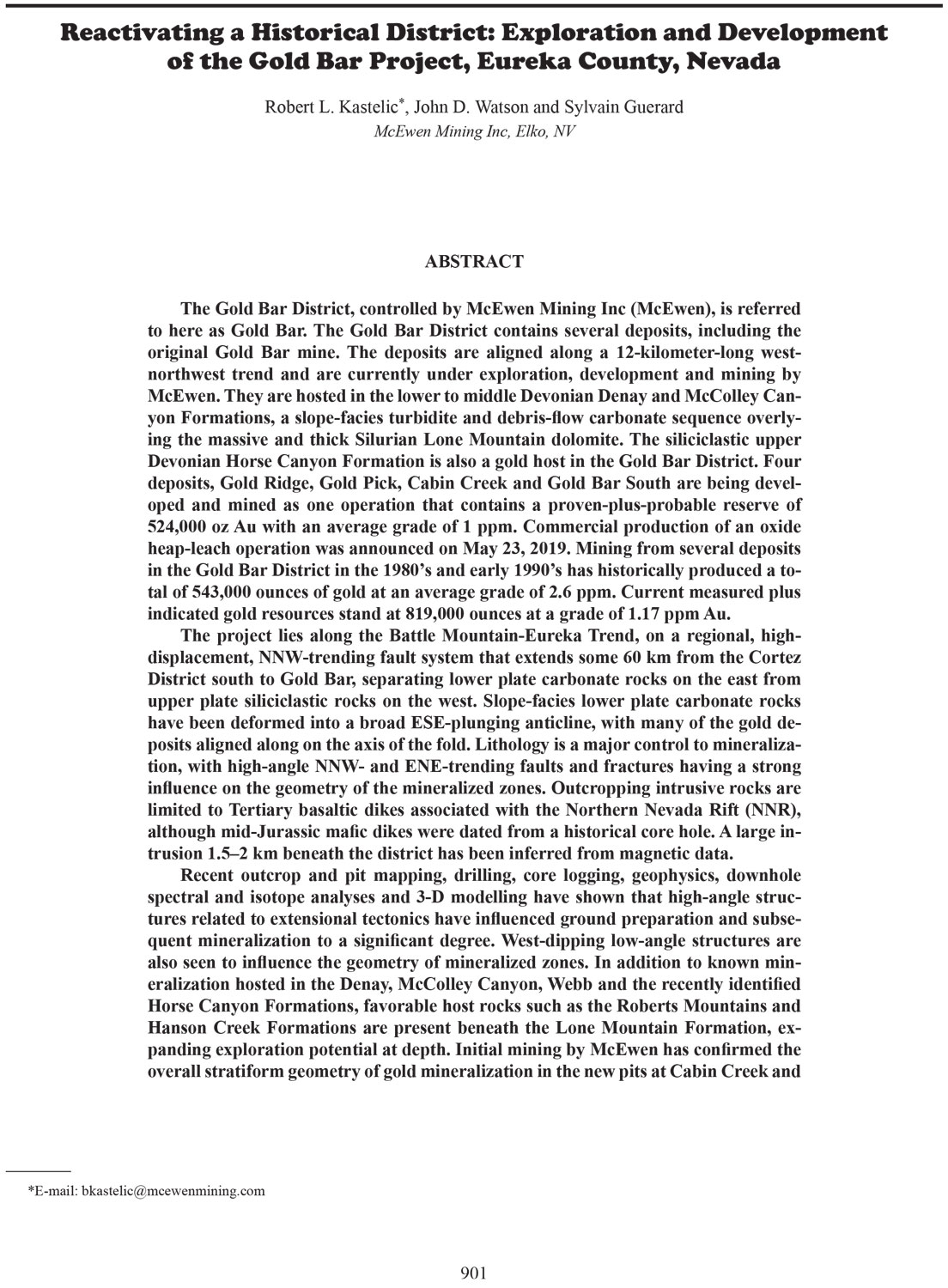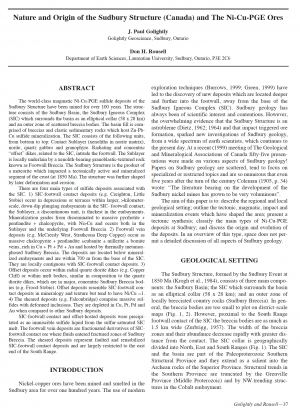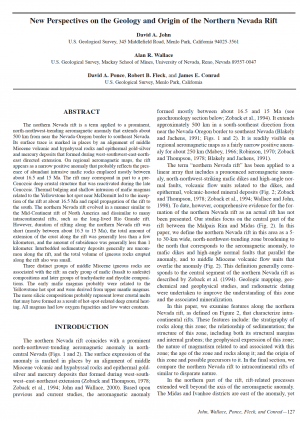Description
The Gold Bar District, controlled by McEwen Mining Inc (McEwen), is referred
to here as Gold Bar. The Gold Bar District contains several deposits, including the
original Gold Bar mine. The deposits are aligned along a 12-kilometer-long west-
northwest trend and are currently under exploration, development and mining by
McEwen. They are hosted in the lower to middle Devonian Denay and McColley Can-
yon Formations, a slope-facies turbidite and debris-flow carbonate sequence overly-
ing the massive and thick Silurian Lone Mountain dolomite. The siliciclastic upper
Devonian Horse Canyon Formation is also a gold host in the Gold Bar District. Four
deposits, Gold Ridge, Gold Pick, Cabin Creek and Gold Bar South are being devel-
oped and mined as one operation that contains a proven-plus-probable reserve of
524,000 oz Au with an average grade of 1 ppm. Commercial production of an oxide
heap-leach operation was announced on May 23, 2019. Mining from several deposits
in the Gold Bar District in the 1980’s and early 1990’s has historically produced a to-
tal of 543,000 ounces of gold at an average grade of 2.6 ppm. Current measured plus
indicated gold resources stand at 819,000 ounces at a grade of 1.17 ppm Au.
The project lies along the Battle Mountain-Eureka Trend, on a regional, high-
displacement, NNW-trending fault system that extends some 60 km from the Cortez
District south to Gold Bar, separating lower plate carbonate rocks on the east from
upper plate siliciclastic rocks on the west. Slope-facies lower plate carbonate rocks
have been deformed into a broad ESE-plunging anticline, with many of the gold de-
posits aligned along on the axis of the fold. Lithology is a major control to mineraliza-
tion, with high-angle NNW- and ENE-trending faults and fractures having a strong
influence on the geometry of the mineralized zones. Outcropping intrusive rocks are
limited to Tertiary basaltic dikes associated with the Northern Nevada Rift (NNR),
although mid-Jurassic mafic dikes were dated from a historical core hole. A large in-
trusion 1.5–2 km beneath the district has been inferred from magnetic data.
Recent outcrop and pit mapping, drilling, core logging, geophysics, downhole
spectral and isotope analyses and 3-D modelling have shown that high-angle struc-
tures related to extensional tectonics have influenced ground preparation and subse-
quent mineralization to a significant degree. West-dipping low-angle structures are
also seen to influence the geometry of mineralized zones. In addition to known min-
eralization hosted in the Denay, McColley Canyon, Webb and the recently identified
Horse Canyon Formations, favorable host rocks such as the Roberts Mountains and
Hanson Creek Formations are present beneath the Lone Mountain Formation, ex-
panding exploration potential at depth. Initial mining by McEwen has confirmed the
overall stratiform geometry of gold mineralization in the new pits at Cabin Creek and Gold Pick, but structures are seen to play a key role in localizing mineralization. Ore
zones are controlled by intersecting high-angle NW- and NE-trending structures and
west-dipping low-angle structures, all within favorable host rocks.





